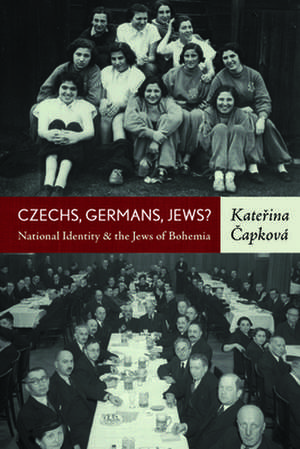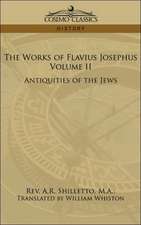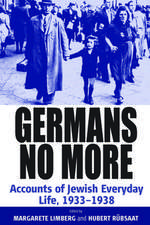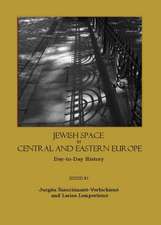Czechs, Germans, Jews? National Identity and the Jews of Bohemia
Autor Kate'rina 'Capkova, Kateerina Ecapkovaa, Kate Ina Apkovaen Limba Engleză Hardback – 30 apr 2012
Preț: 751.25 lei
Preț vechi: 975.65 lei
-23% Nou
Puncte Express: 1127
Preț estimativ în valută:
143.77€ • 156.11$ • 120.77£
143.77€ • 156.11$ • 120.77£
Carte tipărită la comandă
Livrare economică 22 aprilie-06 mai
Preluare comenzi: 021 569.72.76
Specificații
ISBN-13: 9780857454744
ISBN-10: 0857454749
Pagini: 298
Dimensiuni: 152 x 229 x 18 mm
Greutate: 0.57 kg
Editura: BERGHAHN BOOKS INC
ISBN-10: 0857454749
Pagini: 298
Dimensiuni: 152 x 229 x 18 mm
Greutate: 0.57 kg
Editura: BERGHAHN BOOKS INC
Notă biografică
Katerina Capkova teaches Modern Jewish History at the Charles and New York universities in Prague. She studied history, German studies and Yiddish in Prague, Vienna, Munster, Oxford, Paris, and Basel. She is an author of Uncertain Asylum. Czechoslovakia and the Refugees from Nazi Germany (with Michal Frankl, 2008).
Cuprins
Illustrations Acknowledgements A note on personal and place names Abbreviations Map of Czechoslovakia and the Bohemian Lands Introduction Chapter 1. The basic features of the Jewish community in Prague and in Bohemia Chapter 2. Jews as a national minority in the new republic Chapter 3. German Jews Chapter 4. Czech-Jews Chapter 5. Zionists Conclusion Bibliography Index
Recenzii
"A masterful examination of the dynamics of Jewish integration in - and into - interwar Czechoslovakia, complicated by the dilemma of competing national identifications. Katerina Capkova skillfully interweaves the theoretical positions, social relations, and political conflicts involving the three main articulations of modern Jewish identity in this important region of Central Europe and traces their fortunes down to the dissolution of the Czechoslovak Republic under the impact of fascism - Simply put, it has no equal." * Hillel J. Kieval, Washington University in St. Louis "Capkova's book is the first and so far the only comprehensive study on the history of the Jews in Bohemia in the era of the first Czechoslovak Republic. It is also the first systematic research on this topic in the post-communist era, which continues the broken tradition of Czech and German studies on Jewish history and culture in the Czech Lands, interrupted by the Nazi occupation and the communist domination of Czechoslovakia." * Otto Dov Kulka, The Hebrew University of Jerusalem "This is an excellent book. I very much enjoyed reading it and learned a lot from it - The careful and well-informed definitions of the various Jewish communities discussed are admirably clear and will be of use to students as well as specialists in the field." * Mary Heimann, University of Strathclyde, Glasgow








